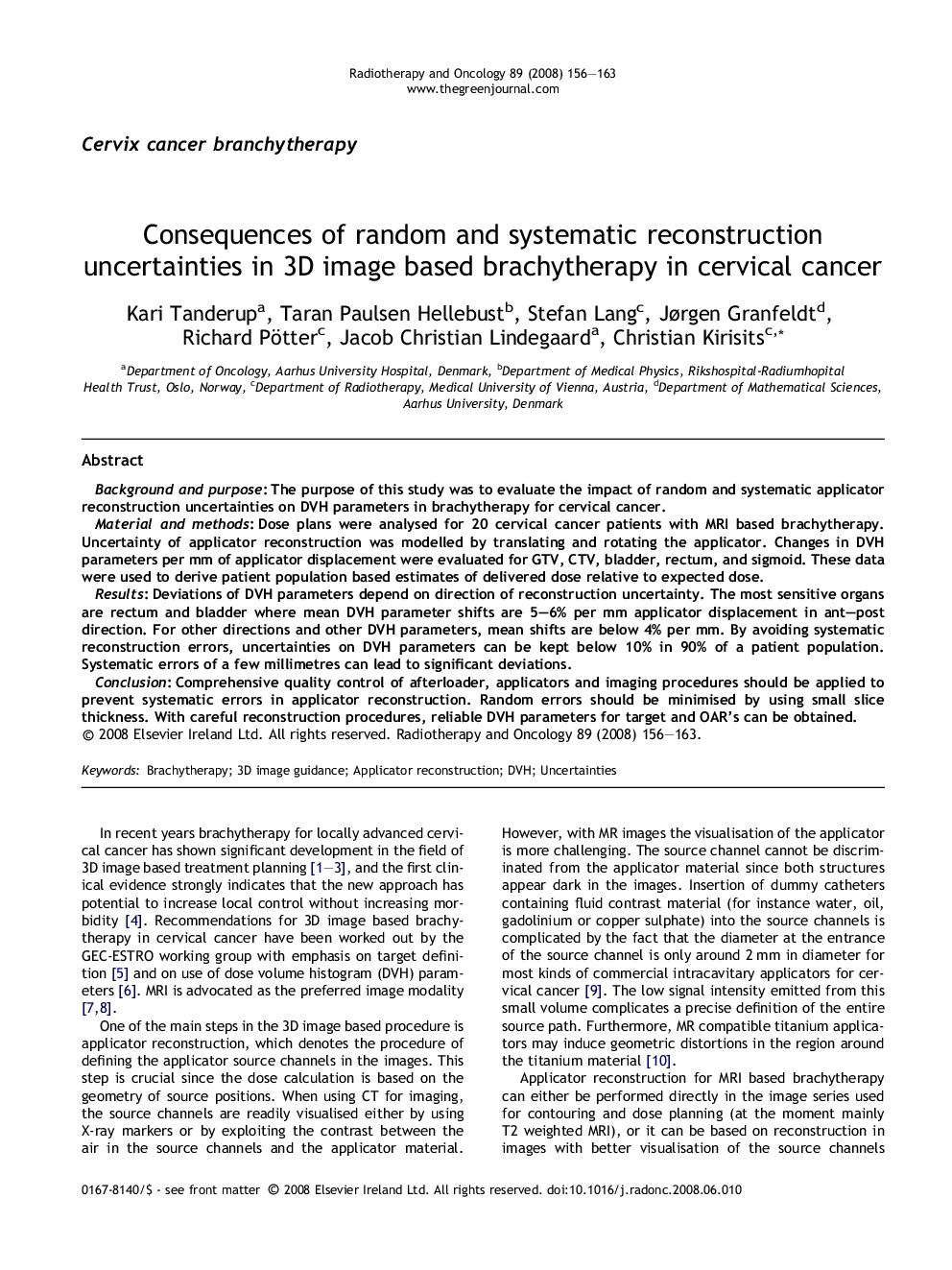| Article ID | Journal | Published Year | Pages | File Type |
|---|---|---|---|---|
| 2160250 | Radiotherapy and Oncology | 2008 | 8 Pages |
Background and purposeThe purpose of this study was to evaluate the impact of random and systematic applicator reconstruction uncertainties on DVH parameters in brachytherapy for cervical cancer.Material and methodsDose plans were analysed for 20 cervical cancer patients with MRI based brachytherapy. Uncertainty of applicator reconstruction was modelled by translating and rotating the applicator. Changes in DVH parameters per mm of applicator displacement were evaluated for GTV, CTV, bladder, rectum, and sigmoid. These data were used to derive patient population based estimates of delivered dose relative to expected dose.ResultsDeviations of DVH parameters depend on direction of reconstruction uncertainty. The most sensitive organs are rectum and bladder where mean DVH parameter shifts are 5–6% per mm applicator displacement in ant–post direction. For other directions and other DVH parameters, mean shifts are below 4% per mm. By avoiding systematic reconstruction errors, uncertainties on DVH parameters can be kept below 10% in 90% of a patient population. Systematic errors of a few millimetres can lead to significant deviations.ConclusionComprehensive quality control of afterloader, applicators and imaging procedures should be applied to prevent systematic errors in applicator reconstruction. Random errors should be minimised by using small slice thickness. With careful reconstruction procedures, reliable DVH parameters for target and OAR’s can be obtained.
